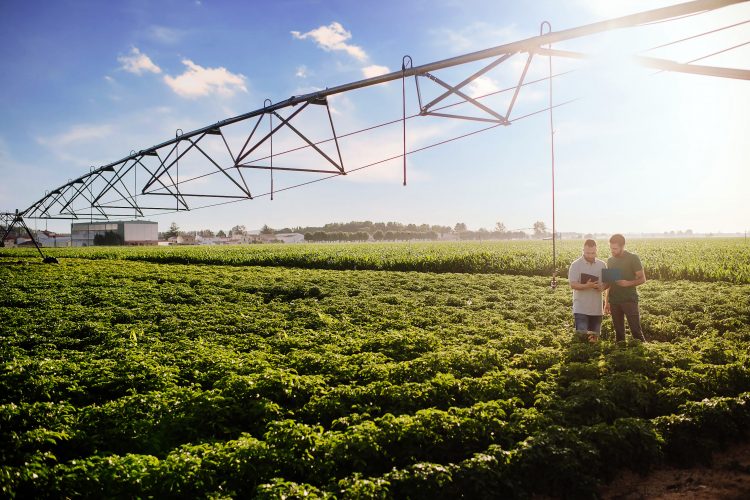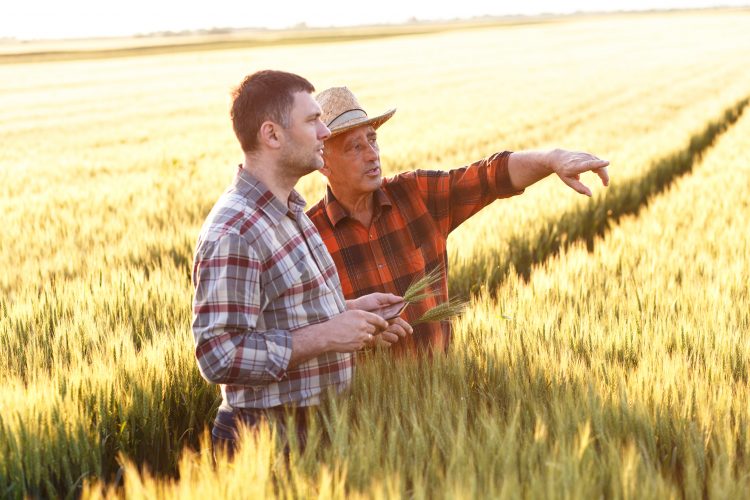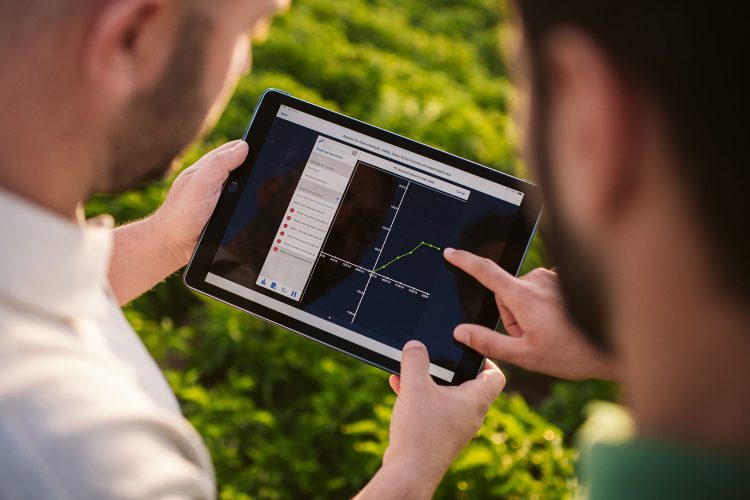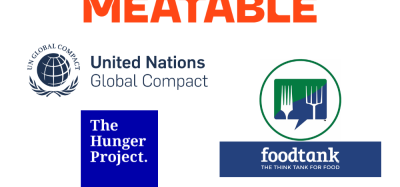Will farmers be the next great data scientists?
- Like
- Digg
- Del
- Tumblr
- VKontakte
- Buffer
- Love This
- Odnoklassniki
- Meneame
- Blogger
- Amazon
- Yahoo Mail
- Gmail
- AOL
- Newsvine
- HackerNews
- Evernote
- MySpace
- Mail.ru
- Viadeo
- Line
- Comments
- Yummly
- SMS
- Viber
- Telegram
- Subscribe
- Skype
- Facebook Messenger
- Kakao
- LiveJournal
- Yammer
- Edgar
- Fintel
- Mix
- Instapaper
- Copy Link
Posted: 23 August 2019 | David Wilkinson, Mac S C McWilliam | No comments yet
As the global population continues to soar, the pressure on farmers to enhance agricultural productivity increases. New Food hears from two industry experts who believe technology holds the answer.


Agricultural farmers and growers are at the centre of the world’s food supply, with one third of all workers being employed in the sector, which constitutes the backbone of local communities and nourishes more than 7 billion people globally.1
Today, one of if not the most significant problems farmers and growers face is how to increase agricultural productivity to feed the growing population. Globally, food availability will need to increase 50 percent by 2030 and 70 percent by 2050.2 To put this into perspective, farmers will need to grow more in the next 40 years than they did in the previous 10,000.3 

PepsiCo has been working with more than 3,900 farmers and growers from whom we source our crops, to try and navigate these complex challenges and build agronomy practices
that will help us grow more food using less. Ultimately, we are a business that is built on agriculture – we rely on the use of natural high-quality local raw materials such as corn, potatoes, oats and plantain. This means we have a significant role to play in addressing these critical issues and finding solutions.
We have discovered that an important part of the solution to these challenges lies in ‘precision agriculture’ – using state-of-the-art technology to help farmers gather data on their crops and utilise those insights to improve growing practices; making them more efficient and using fewer resources.
Tracking crop performance
We began working with precision technology over a decade ago, using a crop monitoring and traceability tool co-developed with the University of Cambridge called i-Crop. After several years of testing, in 2018, we rolled out our next generation of the tool – iCrop 2.0 – for our potato crops in Europe.
iCrop 2.0 is a mobile and web-based agriculture management platform that allows growers to understand how their crops are performing and the reasons behind any changes. Currently, all our potato fields – across 14 markets in Europe – are covered by iCrop 2.0. To give that perspective, iCrop 2.0 supplies intelligence across 48,000 hectares of potato production. As a crop, potatoes are particularly sensitive to climate conditions and are vulnerable to diseases, which means that growers must monitor them closely to ensure successful harvests and high yields.
By using iCrop 2.0, farmers can carry out in-field crop monitoring, receiving live data from any field they are tracking across more than 200 data points, either online or via an app. For example, the tool enables farmers to make a correlation between crop performance and soil type, fertilisers and irrigation. As a result, farmers can be more precise when it comes to ensuring their crops get what they need, when they need it.
The tool also helps farmers and growers to carry out in-season analytics whereby data goes into the system for reporting and the results are then shared. This includes using weather data from local weather stations, which helps farmers to predict how the weather will impact their crops.
Driving water efficiency
Growing potatoes requires intensive water usage. Knowing when and how much to water the crops has traditionally been a matter of instinct, with imprecision at its core. Another challenge is that growers often do not have the time to irrigate the plot when needed, which can sometimes leave fields dry and result in reduced yields.
But data has changed this for the better. iCrop 2.0 gives farmers early warning about irrigation requirements so they can start watering their fields at the right time. This is particularly beneficial in water-stressed regions where the management of water is becoming ever more critical. Farmers and growers can use the tool to create a water irrigation schedule, which takes into consideration soil type and weather conditions.
We have seen excellent results from this practice in Spain, where we began using the tool on 40 fields. Previously, 48 percent of the fields were applying the right amount of water; since integrating iCrop 2.0 with the irrigation scheduling tool, this has shifted to 92 percent. We share insights such as these with growers to ensure we can all benefit together and enhance agronomy protocols.
Predicting yields
Data is also enabling our growers to make significant developments in oat growing. As the oat grain continues to rise in popularity, with consumers favouring healthier breakfast options, demand is soaring in the western world.
Survey data conducted in the UK suggests that there is a yield gap of approximately four tonnes per hectare (t/ha) between average farm yields and optimal yields, with the theoretical potential of an oat crop as high as 20t/ha. Ultimately, increasing yields will make oats a more attractive proposition for growers and will therefore help to boost supply to meet the increasing demand.


As the population grows, farmers are faced with the challenge of increasing agricultural productivity, but technology may hold an answer moving forwards.
With production and research focused on other cereal crops such as wheat, barley and rice, there has so far been limited research around oats. To address this, we brought together a consortium of leading industry and academic partners to form the Opti-Oat project, which is currently being piloted in the UK. It aims to maximise yields, deliver oats with superior quality attributes and ensure sustainable production with economic benefits for the industry.
This Innovate UK and BBSRC (Biotechnology and Biological Sciences Research Council) co-funded project, which included extensive research and monitoring such as with drones and satellites, collected more than a million data points from four seasons of field trials.
As part of a consortium, we have used this data to create an ‘Oat Growth Guide’. This is a first-of-its-kind publication for growers, providing measurable benchmarks for crop performance. The guide will enable growers to assess crop status against key development benchmarks and explain how the benchmarks can be influenced by crop management. We believe this will be instrumental in understanding oat growth and development.
The data is also being used as the engine for the ‘Opti-Oat Crop Intelligence Platform’, which takes ground measurements, remote sensing data and weather data to make predictions on growth stage, crop status and yield. Ultimately, this will give growers the insights to make management decisions tailored to different zones in the field to optimise crop performance. Through this, we aim to help our growers increase yields by up to 10 percent and improve the uniformity of grain quality.
Precision agriculture technology
A farm tech revolution is emerging, which we expect will create structural changes in farms comparable to the impact that tractors had when they were widely introduced. In our experience, it is the farmers and growers that are spearheading the agri-tech revolution as they really understand the importance of this technology, how to operate it, and how to interpret the data generated. We foresee new possibilities developing as these new digital skills are passed down to the next generation.
Universities and colleges are already training large numbers of young agricultural engineers to operate this precision agriculture technology. These young people are now working alongside farmers to share the latest knowledge on how to grow different crops. This type of collaboration is exactly what the industry needs to overcome the challenges it faces now and in the future.
There is no doubt that the next decade will bring big challenges for farmers, but we remain optimistic that with the help of technology, farmers and growers will be able to navigate the competing pressures of producing more food with minimal environmental impact.
About the authors


David Wilkinson
David Wilkinson is Senior Director of European Agriculture for PepsiCo Europe. He oversees the sourcing of 1.4 million tonnes of potatoes, together with 120,000 tonnes of corn, apples and nuts across wider Europe and leads PepsiCo’s team of agronomy experts.


Mac S C McWilliam
“Mac” S C McWilliam received his PhD in crop physiology from The University of Nottingham. For the past seven years, he has worked in PepsiCo Global R&D, leading a team that identifies and develops innovative practices and technologies to advance farming practices.
References
- http://worldpopulationreview.com/
- https://wriorg.s3.amazonaws.com/ s3fs-public/creating-sustainable- food-future_0.pdf?_ga= 2.151924080.834475904. 1544550673-482361669. 1544018061
- https://www.economist.com/ finance-and-economics/2014/12/ 30/barbarians-at-the-farm-gate
Issue
Related topics
Environment, Processing, Robotics & automation, Sensory technology, Technology & Innovation, Water









